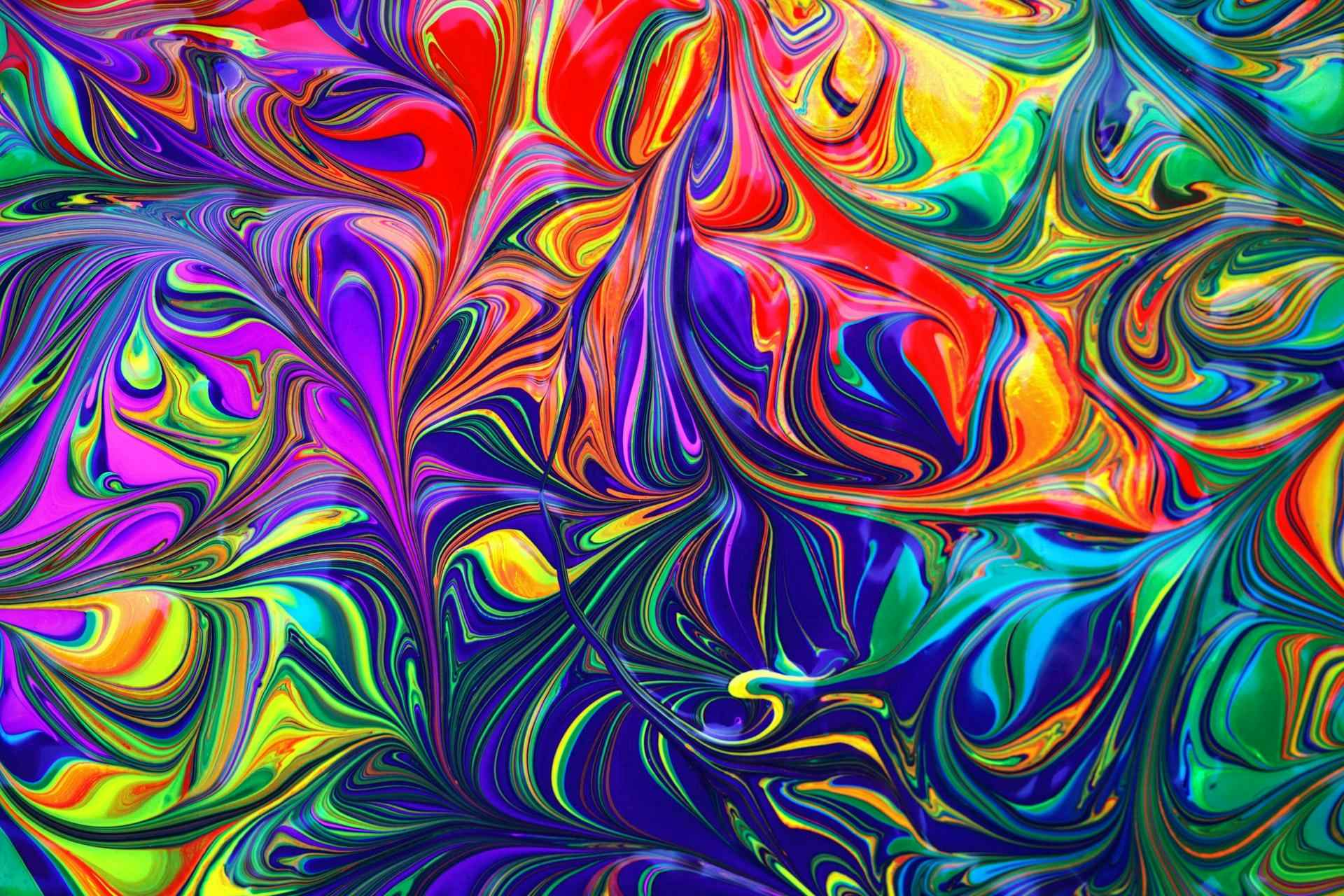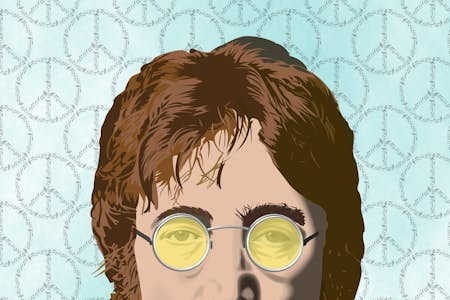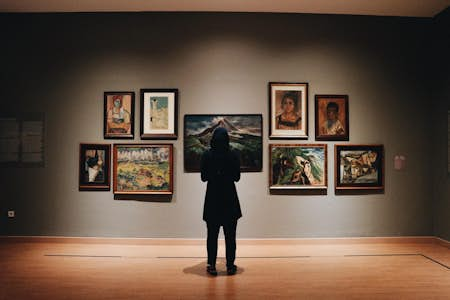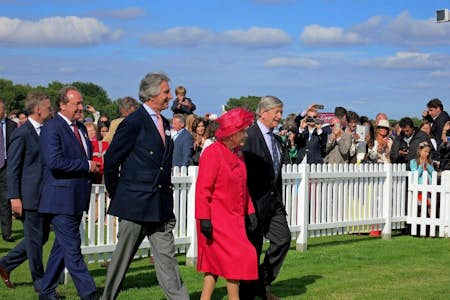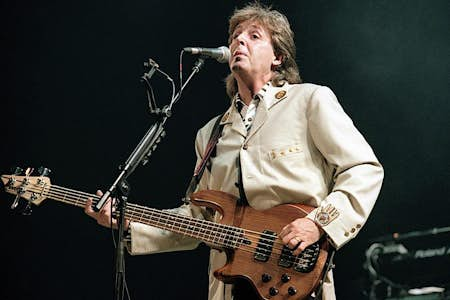If you can remember psychedelia, you weren’t there, man. Let’s get it into the open right away. Psychedelia would not have happened if not for LSD, mescaline, and psilocybin. However, the notion that psychedelia is the dominion of a bunch of stoned sixties hippies is false. According to a US survey, the use of psychedelic substances was quite limited during this period, confined to 0.1% of the population. This is the same number that admits to using psychedelics today.
Although this was an American study, and the proportion of young users would undoubtedly have been higher than 0.1%, it shows that the impact of psychedelics went beyond the small group of academics, writers, and artists that championed them and had a profound effect on 1960’s culture. The ripples have travelled through subsequent decades and continue to influence music, visual art, design, and fashion in a way that goes well beyond ‘retro cool.’
What is psychedelic music?
The quintessential features of psychedelia are swirling vivid colours that melt into each other, sensory distortion, disassociation of perceptions of time, depersonalisation, and deep connectivity with your surroundings. Everyday objects bending and dissolving into shapes or patterns which shimmer and dance. Artists recreated the visual aspects, while musicians, dealing with something more abstract, turned to exotic sounds, particularly eastern instruments such as the sitar and tabla, along with newer innovations like the synthesiser, mellotron and theremin. They incorporated disjunctive time and key changes and added backwards tapes, panning, phasing, looping, reverb, and feedback to create the vibe they wanted.
The roots of the movement
The 1950s had seen more people questioning contemporary values. Beat Generation writers such as Jack Kerouac, Allen Ginsberg, and William Burroughs had written about using drugs, the effects of meditation, and eastern philosophy as ways to reach alternate states or free and expand the mind. In 1938, while looking for a respiratory and circulatory stimulant, Albert Hofmann synthesised LSD. He put it aside and thought little more about it. Five years later, he inadvertently ingested a small amount and experienced a ‘not unpleasant intoxicated-like condition.’ Three days later, he experimented with a dose of 250 milligrams and had an extraordinary bicycle ride home. From then, the genie was out of the bottle.
Early experiments
There was growing interest in the notion of ‘expanding the mind’ and people continued to investigate the possibilities. Aldous Huxley, one of the more pre-eminent, wrote about his experiences of mescaline in his book The Doors of Perception that was published and well-received in 1954. The following year, MP Christopher Mayhew agreed to participate in an experiment for Panorama and took four hundred milligrams of mescaline. With him was British psychiatrist Humphrey Osmond, who conceived the term 'psychedelic'. Huxley had suggested 'phanerothyme', but Osmond thought his name was better). Mayhew's 'trip' was recorded but not shown on TV until the 1980s.
Opening new doors
Advocates of psychedelics such as Huxley, Timothy Leary, Alan Watts, Ralph Metzner and Ram Dass had a profound influence on the counterculture of the early 60s. And magazines like the 1963 publication Psychedelic Review arose and posed questions like ‘Can this Drug Expand Man’s Mind?’ - treating LSD as a substantial breakthrough in human evolution. By 1964, counterculture, based on the use of LSD, had bloomed in San Francisco. An eclectic group assembled around One Flew Over the Cuckoo's Nest novelist Ken Kesey. Called the Merry Pranksters, they began holding a series of gatherings named the 'Acid Tests' where free LSD was handed out, and bands played wild dissonant music. There were coloured light shows, kaleidoscopic film projections, tall sculptures built from car parts, and general mayhem.
The spread of psychedelia
In San Francisco, musicians quickly embraced psychedelia. Folk and jazz musicians experimented with open guitar tunings that gave their music a new sound and fused western harmonic traditions with droning Indian and Arabic modes and rhythms. A highly influential piece and regarded as a watermark in the birth of psychedelia is the 1963 album ‘Fantasias for Guitar and Banjo’ by folk guitarist Sandy Bull. Later, John Fahey’s nineteen-minute ‘The Great San Bernardino Birthday Party’ took earlier musical ideas and created a blueprint for what was to follow.
Into the mainstream
It was rock music that would take the mantle and define the genre, propelling it into mainstream culture. Psychedelia in Britain mainly had been the preserve of artists, intellectuals, and mystics. In the US, it was confined more to the anti-war movement and a youth culture demanding social and political change. The pragmatic British had tended to regard the whole psychedelic movement as a bit of a joke. But in both countries, psychedelia influenced music, visual art began to blossom and thrive. Interaction between US and British musicians spread musical ideas and drugs. Bob Dylan supposedly introduced the Beatles to cannabis in 1964. A year later, ‘Demon Dentist’ John Riley dosed John Lennon and George Harrison with LSD during a night out in London.
Picking up momentum
In the US, The Beach Boys released their seminal album ‘Good Vibrations.’ An LA acoustic band called The Byrds went electric and added the jangling sound of a twelve-string Rickenbacker guitar to the surreal lyrics of Bob Dylan. Bill Graham's Fillmore West provided a venue for bands such as The Grateful Dead, Jefferson Airplane, and the 13th Floor Elevators, who introduced the term psychedelic to rock music with the 1966 album ‘The Psychedelic Sounds of the 13th Floor Elevators’. Grace Slick, singing in the band Jefferson Airplane, released 'White Rabbit,' a hypnotic song that used imagery from Lewis Carroll’s 1865's ‘Alice's Adventures in Wonderland’ and ‘Through the Looking-Glass’. Songwriters looked to children’s books, fantasy, and science fiction for ideas.
British whimsy
British and US psychedelia, while sharing similar roots and much the same ethos, separated and developed different sensibilities. American psychedelia had strong associations with the counterculture, but in Britain, it was more whimsical. Lewis Carroll, Tolkien, and C S Lewis had provided bedtime stories for generations of British children, and this element drifted into their older psyche. As a result, British music became washed through in nostalgia that harked back to childhood and earlier times. It embraced the Romantics, Pre-Raphaelites, the Victorian and Edwardian eras. It recalled childhood places, espoused a love of nature, and pictured a countryside dotted with magical woodlands, elves, pixies, and fairies. People wore pre-WW1 military uniforms, grandad shirts, and embroidered kaftans. They listen to- See Emily Play, My White Bicycle, Penny Lane, Strawberry Fields, Paper Sun, and Hear the Grass Grow.
The rise of poster art
In tandem with the music, psychedelic art and design flourished worldwide, especially in the three main centres, San Francisco, LA, and London. Innovations in graphic design, particularly screen printing, made publishing more straightforward and made a vivid colour pallet available. Early proponents were San Francisco poster artists such as Rick Griffin, Bonnie MacLean, and Stanley Mouse & Alton Kelley. Much of their work suggested Art Nouveau, Pop Art, and Dada, featuring rich colours with ornate lettering and distorted imagery. Soon it became so popular that enthusiasts started to collect it, posters became an art form in themselves, and record album design emulated it.
In fine art
A good deal of psychedelic art is printed, but a few famous pieces can also be described that way. Although painted five hundred years ago, Garden of Earthly Delights by Hieronymus Bosch is undoubtedly an image from another consciousness. Salvador Dali’s Hallucinogenic Toreador is decidedly ‘trippy,’ though he claims never to have taken drugs. Peter Max’s work ‘Love,’ is regarded as a significant piece. Today, artists like Jonathan Solter and Alex Grey (St Albert and The LSD Revelation Revolution) create paintings that are unashamedly based on the psychedelic experience.
What’s all this, then?
In 1966, the backlash against LSD began. That great guardian of public values, the News of the World, launched a campaign to ban psychedelics. It was corrupting the youth of the day, and something had to be done before the country went to the dogs. Harold Wilson’s Government agreed that things had got far ‘too silly’ and made it illegal. Authorities in the USA were also moving in the same direction, and during 1966 all US states banned its use. The deaths of some of rock music’s most influential figures and others becoming ‘acid casualties’, the murders of Sharon Tate in California and Meredith Hunter at the Altamont Free Festival spoiled the party.
Still going
Music morphed into prog rock, glam and punk, yet seventies musicians and songwriters still drew on psychedelic sensibilities. T-Rex said, ‘Ride a White Swan,’ and concept albums came out based on legends, myths, and magic. There was Pink Floyd's Dark Side of the Moon and Yes's Close to the Edge. While in the eighties, The Soft Boys, the Teardrop Explodes, and Echo & the Bunnymen employed old-style jangly guitar, distortion, and studio effects and became significant figures in the neo-psychedelic era. XTC kept the Byrds style twelve-string Rickenbacker sound going (and later released a psychedelic album under the name of their alter-egos, The Dukes of Stratosphere). The Paisley Park LA psychedelic scene influenced Prince so much that he named his label and studio after it.
It’s a rave
The late eighties saw the Summer of Love 2 and people digging out the tie-dyes again. This time it was driven more by electronic dance music and manifested itself in raves and clubbing rather than ‘happenings. The music was- acid house, hip-house chill-out, trance. Plenty of distortion with squelching bass and loud, repetitive beats. Lucozade replaced brown ale. People jacked it in and went off to Ibiza and Goa instead of San Francisco or up a Welsh mountain. There were even brighter, acid-fluorescent colours. 'Smiley’ faces replaced peace symbols, the Stone Roses, and the Happy Mondays stood in for the Yardbirds and Procol Harum, LSD was there, but MDMA fuelled it. It was different, but it was ‘ plus ça change.’
It’s never gone away
Today, psychedelia is still going strong. We may not experience it as profoundly as first hearing ‘Strawberry Fields Forever,’ but it’s out there punching its weight. Google ‘psychedelia’, and you'll see what I mean. The encouraging thing is that it is as weird and daft as anything the Merry Pranksters could come up with - ‘eight modern trippy psychedelic artists that will melt your face?’ Or the ‘ It’s Psychedelic baby’ magazine? Online there is an impressive selection of psychedelic clothes, furnishings, and lava lamps. If you want, there is ‘lysergic acid pet apparel.’ The spirit of 1967 never left. I just need to lose a few pounds, then I can get back into my loons and re-join it.

